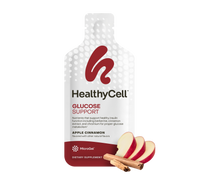If you've been to the doctor recently for a routine health screening, you likely had a serum lipid profile test done. This blood test measures your total cholesterol, HDL cholesterol, LDL cholesterol, and triglycerides to determine your risk of cardiovascular disease.
You may already be aware that the measurement of your total cholesterol in your serum lipid profile test is not the most important barometer for determining your risk of developing cardiovascular disease. Instead, the measure of "good" cholesterol versus "bad" cholesterol is a better predictor. Most people know the two types of cholesterol: high-density lipoprotein (HDL) and low-density lipoprotein (LDL). LDL is commonly called "bad" cholesterol because it can cause an accumulation of plaque in the arteries. High levels of LDL can increase your risk of developing heart disease. HDL is often called "good" cholesterol, as it helps remove excess cholesterol from the bloodstream. High levels of HDL can reduce your risk of heart disease.
However, you might not be as familiar with triglycerides, a type of fat, and how they can impact your cardiovascular health. Triglycerides act as an energy source for the body, provide insulation to help regulate body temperature, and play an important role in metabolism. Triglycerides are produced in the liver, but most come from the foods we eat, including foods high in saturated fat, trans fats, and simple carbohydrates. While excessive consumption of foods such as butter and high-fat dairy can contribute to high triglyceride levels, highly processed foods are also to blame. Foods such as potato chips, fried foods, packaged meats, packaged cakes and cookies, and frozen pizzas can significantly affect triglyceride levels. Obesity, smoking, a poor diet, a sedentary lifestyle, and excessive alcohol consumption all play a role in the development of high triglyceride levels.
While triglycerides are important for certain processes to occur in the body, high levels of triglycerides can raise your risk of developing a stroke or heart attack.
Numbers and Ratios
You might have seen the below criteria for total cholesterol, HDL, LDL, and triglyceride levels.
- Total cholesterol: Below 200 mg/dL.
- High-density lipoprotein (HDL) cholesterol: Above 60 mg/dL.
- Low-density lipoprotein (LDL) cholesterol: Below 100 mg/dL (For people with diabetes: Below 70 mg/dL).
- Triglycerides: Below 150 mg/dL.
While these numbers are important, you should also pay attention to the ratios.
Triglycerides and HDL Cholesterol
HDL and LDL have long been used as a barometer for overall heart health, but another ratio is often overlooked. Recent research shows that your triglyceride (TG) to HDL ratio (TG: HDL) can predict your risk of developing metabolic syndrome, cardiovascular disease, insulin resistance, and diabetes. As a result, many doctors now believe that the TG: HDL ratio is a better predictor of heart disease than the LDL: HDL ratio.
How Do You Determine Your Ratios?
You can calculate your cholesterol ratio by dividing your total cholesterol by your HDL number. For example, if you have a total cholesterol level of 200 mg/dL and your HDL is 50 mg/dL, your ratio is 4:1. Your number should be below 5:1 and ideally around 3.5:1.
Below are the risk categories based on LDL-to-HDL ratios:
Optimal: 3.5:1 or less
Normal: 3.5-5:1
Elevated Risk: 5:1:1 or higher
Your TG: HDL ratio is calculated by dividing your triglyceride levels by your HDL number. For example, if your triglyceride level is 120 mg/dL and your HDL is 40 mg/dL, your number is 3:1. A ratio of 2:1 or less is considered ideal. So, if your triglyceride level is 100 mg/dL, your HDL should be 50 mg/dL. A ratio of 4:1 is considered high, and a ratio of 6:1 or more is considered extremely high and indicates an elevated risk of heart attack and stroke.
Below are the risk categories based on TG to HDL ratios:
Optimal: 1:1 or less
Low Risk: 2:1
Slight Risk: 3:1
High Risk: 4:1 or higher
How Can You Keep Your Ratios In Check?
If your TG:HDL ratio is not good, the best thing to do is lower your triglycerides through lifestyle changes.
What Can You Do to Lower Your Triglyceride Levels?
- Lose weight.
- Exercise regularly for at least 150 minutes per week (moderate-intensity).
- Consume a healthy diet containing a variety of fresh vegetables, fruits, whole grains, low-fat or fat-free dairy products, healthy oils, and lean meats. Avoid fried and highly processed foods.
- Limit the amount of saturated fat and trans fat in your diet.
- Reduce alcohol intake.
- Quit smoking.
- Add a heart health supplement to your diet, like Healthycell's Heart and Vascular Health supplement. Some ingredients that you should look for in a heart health supplement include Omega-3 fatty acids, soluble fiber, and Coenzyme Q10 (CoQ10). Healthycell's Heart and Vascular Health supplement contains all of these ingredients and more. To learn more, check out Supplements That Lower Triglycerides.
Your doctor may recommend medications, such as statins, to treat excessive triglyceride levels. However, these medications can present serious side effects, so discussing the pros and cons with your doctor, especially if you're taking other medications, is important.
In Summary:
Your TG: HDL ratio may be a better predictor of heart disease than your HDL: LDL ratio. If your TG: HDL ratio is high, you can lower your triglyceride levels through lifestyle and dietary changes.
About the Author
Dr. Giampapa is a world-renowned medical doctor, inventor, and surgeon specializing in anti-aging medicine. He recently received a nomination for the Nobel Prize for his groundbreaking stem cell research, as well as the Edison Award for the Healthycell nutritional supplement for cell health. He was also awarded the A4M Science & Technology award for his development of the BioMarker Matrix Profile – the first computer program to measure aging.




